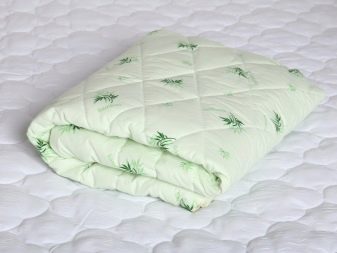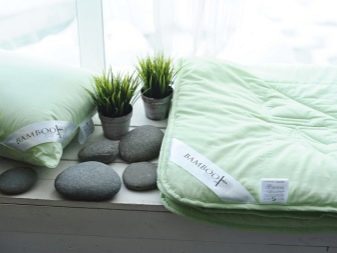Choosing a bamboo blanket
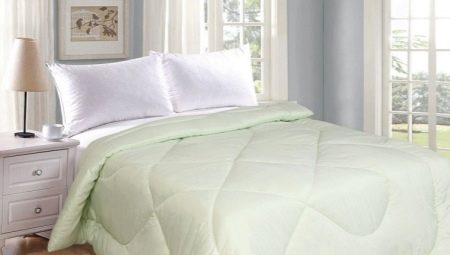
Bamboo has long been used in various economic fields. Now - in the conditions of an urbanistic way of life - the desire for naturalness and naturalness is growing. Instead of traditional products made of down and feathers, items made of bamboo fiber are increasingly being used.
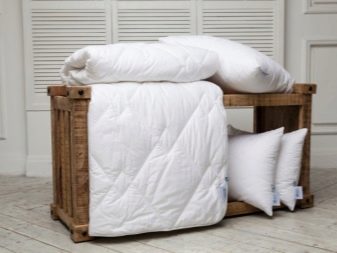

Advantages and disadvantages
Nowadays, bamboo blankets can be found in almost any home textile store. In the production of this type of filler, both natural and artificial raw materials are used. Let's list the advantages of the product.
- These blankets have composition safe for humans and the environment. Despite the synthetics, the product is environmentally friendly. Trusted brands only use bamboo that has passed the mandatory certification. All chemicals that are used to process bamboo during the growth process are completely removed from it before harvesting the product.
- Due to the sharp deterioration in the overall environmental situation on the planet, more and more people are beginning to suffer from allergies. Bamboo blankets are hypoallergenic. Due to this property, everyone can use them, regardless of health status. They are also perfect for those with sensitive skin.
- The plant is not afraid of fungal infections and dangerous pests. Such properties are transferred to products made from bamboo fiber. Microbes that end up on the surface of the fibers quickly die. This property persists for several tens of washing cycles.
- Blankets do not have a specific smell and do not cause discomfort. All the aromas they absorb quickly fade away. Also, dust does not linger in them.
- It is very easy to take care of your blanket. It can be washed in a regular machine. Due to the special properties of the fibers, the product dries quickly.
- Blanket made from natural raw materials maintains warmth remarkably. Even in the coldest winter it will be comfortable under it. Manufacturers also offer many models with different densities. Some of them are chosen for the cold season, others for summer.
- Porous structure does not interfere with natural oxygen exchange.
- Quality products boast high wear resistance. They retain their shape and declared qualities even under conditions of intensive use.
- Bamboo models do not accumulate static electricity, which makes their use as comfortable as possible.
- Even a large item will not weigh much. The average weight is about one kilogram with a size of 200x220 centimeters.
- Storing a bamboo blanket is easy. It can be folded and sent into a wardrobe or chest drawer.
Note: only models in which the percentage of fiber content is at least 50% can boast of the above positive qualities. The optimal amount is 70%.
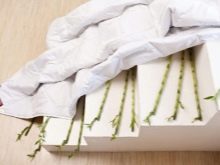
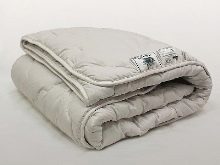
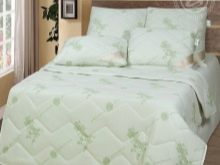
The product also has disadvantages.
- As the first one can be noted high price. The cost of such products will be higher compared to synthetic options.
- Synthetic additives used in production are poorly permeable to oxygen, which is why in the hot season it will be uncomfortable under such a blanket.
- If there is a synthetic winterizer in the composition, it will quickly lose its shape and collapse into a lump. As a result, the product will lose its original volume.
- Another disadvantage - insufficient hygroscopicity, which is also related to the amount of artificial impurities in the composition. If the percentage of synthetics is very high, the blanket should not be used by people with a problem such as sweating.
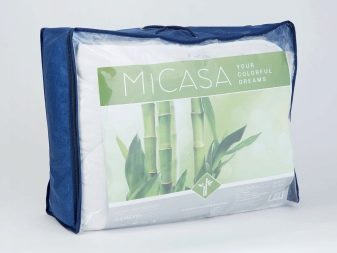
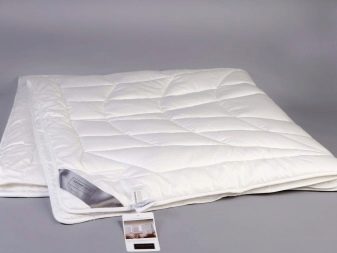
What is better than other fillers?
While bamboo fiber is highly sought after by manufacturers, it is not the only filler option. Previously, brands used synthetic raw materials or natural wool. You can also find quilted blankets on sale.
Consider the most popular and demanded fillers - how they differ from bamboo.
- Camel wool products will warm you even in the coldest season. Blankets are reliable and warm. However, these models are very heavy, which makes them difficult to use. Camel wool blankets cannot be washed: they become unusable and completely lose both their attractive appearance and the declared qualities. The specific smell should be noted separately.
- Despite being labeled "Swan Down Blankets", these synthetic materials... The result is a practical and cheap filler. Despite the artificial origin, the products are lush, light and pleasant to the touch. As a disadvantage, it is worth noting that fluff is poorly breathable compared to bamboo fiber. Due to the build-up of static electricity, swan fluff causes discomfort during sleep.
- Products from eucalyptus are in demand. Despite the name, blankets are odorless at all. The fibers are processed in a special way, due to which they retain the beneficial properties of the plant and are odorless. These products are recommended for customers with respiratory problems. These blankets are easy to care for - just like bamboo blankets.
- If a person has problems with the circulatory system, it is recommended to opt for sheep wool blankets. They will also help with frequent colds and rheumatism. Such products require special care, since natural raw materials are a favorable environment for many bacteria.
- The last option is holofiber products. This material is 100% artificial raw material.Despite this, the duvets have excellent thermal conductivity and do not cause allergies. If the manufacturing process is done correctly, the result is a fluffy duvet that is easy to care for.
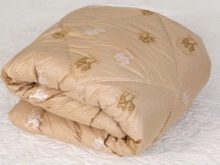
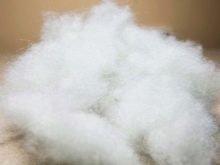
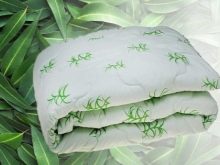
Views
The amount of natural bamboo fiber has practically no effect on the heat saving rate of the blanket. In this case, the price of the product will depend on the percentage of the natural component. The optimal percentage of the volume of bamboo fiber in models of a wide consumer segment is from 30 to 70%.
When determining how well a blanket retains and maintains a comfortable temperature, the density of natural fibers per area of the product is taken into account. Considering the degree of heat-retaining properties, the finished models are divided into three categories.
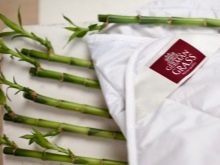
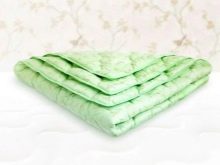
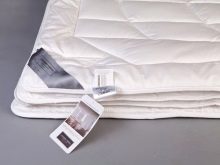
Summer
A summer blanket is also called a lightweight blanket. This is a delicate product that will ensure a comfortable sleep in the warm season. The indicator of the content of bamboo fiber is up to 150 grams per square meter.

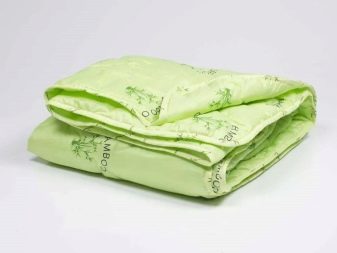
Winter
These models are characterized by increased volumes and increased density. In this case, manufacturers adhere to the following parameters - from 300 grams per square meter... Quilts are often found in this product category.
The stitching helps to maintain its shape during long-term use.
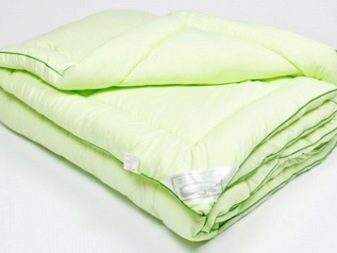

All-season
The sweet spot between the above two options is all-season models. Density - from 150 to 300 grams per square meter. These blankets are used during the transition season.
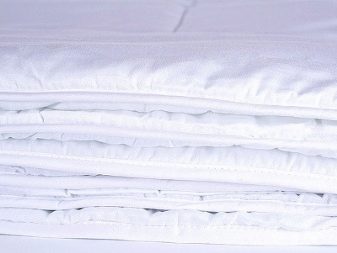

Dimensions (edit)
Another parameter by which the finished product is divided into separate groups is size.
The brands offer the following options:
- one and a half blanket - 140 x 202 cm;
- double product - 172 by 205 cm;
- euro format - 200x200 cm.
Note: the above are standard sizes, while the dimensions of some blankets may slightly differ from the accepted norms. For example, you can find a product in the size of 140x205 cm.
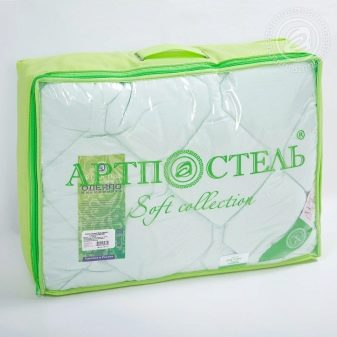
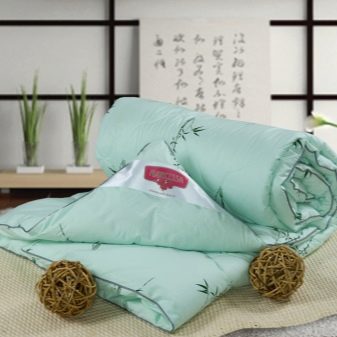
Top manufacturers
Given the growing popularity of bamboo blankets, more and more manufacturers are starting to explore this niche. Some brands have become leaders and retained their positions.
Sortex
A well-known manufacturer in Russia that offers a wide variety of sleep products... To keep the blankets in shape during continuous use, textile edging is used. All-season bamboo products with a density of 300 grams per square meter deserve special attention. Also, a wide range of sizes has been thought out, allowing you to choose the ideal option for any bed: from a single standard to European size.
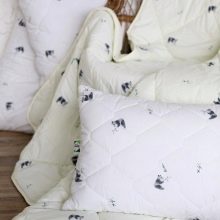
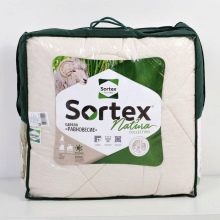

Kupu-Kupu
Russian trade mark, which took the Malay name. Translated into Russian, it translates as "butterfly". Manufacturers have thought of a full size range, as well as a multifaceted palette of colors and shades. The brand focuses on lightweight models. To give the products the necessary density, knitted fabric is used.

Verossa
Another domestic manufacturer specializing in the manufacture of sleep products based on bamboo fiber. In the product catalog, you can find options with different densities. There are blankets for both the hot season and the frosty season.
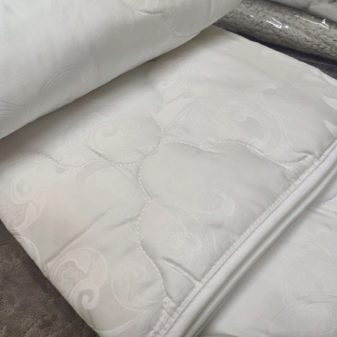
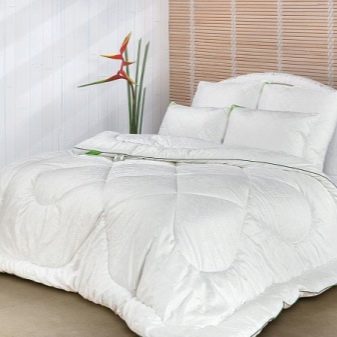
Ecotex
Having studied the product catalog of this brand, buyers will definitely find both lightweight and classic products. Natural and artificial raw materials used in production are carefully sorted and processed.
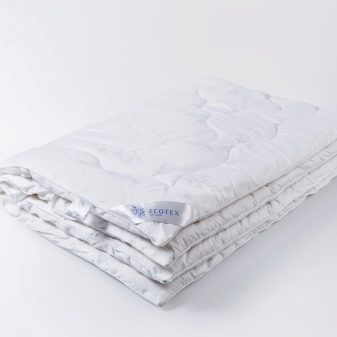
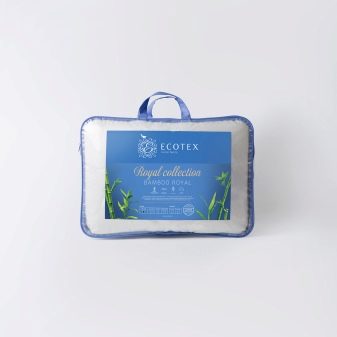
"Light dreams"
A well-known domestic manufacturer offering summer (bamboo fiber density - 200 grams per cubic meter) and insulated products (300 grams per cubic meter). Other common materials are also used: satin, microfiber, poplin.
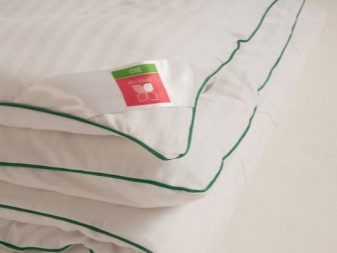
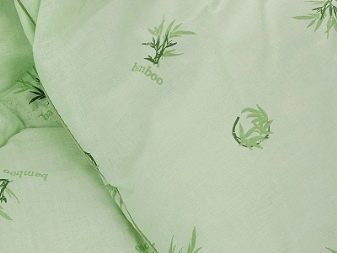
Dargez
Despite the fact that this is a Russian brand, it was founded by a German manufacturer August Reders. Lightweight blankets are in great demand, for the production of which not only bamboo, but also coal (coal bamboo) is used. Thanks to special technologies, professionals have managed to improve the hygroscopic qualities of the filler. Many users have noted the collection called "Bombay". Composition - 50% synthetic raw materials (siliconized polyester) and 50% bamboo fiber.

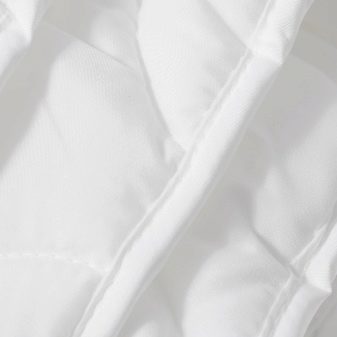
Togas
It is an international company that has been producing home textiles for more than one year. The country of origin of the brand is Greece. In the series "Bamboo Dreams" there are natural fiber blankets. Here you can also find lightweight products with a high percentage of bamboo and a dense jacquard fabric covering.
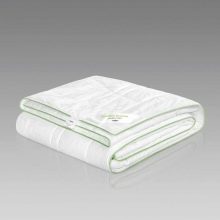
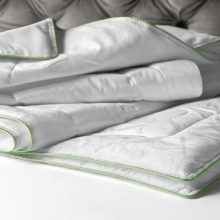
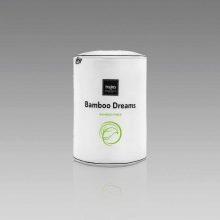
The following brands are also very popular:
- "Smart solution";
- "Artpostel";
- Milanica;
- "Capital of Textiles";
- AlViTek;
- "Crossroads".
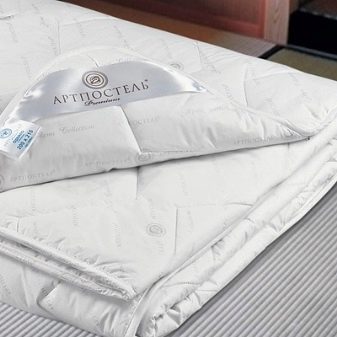
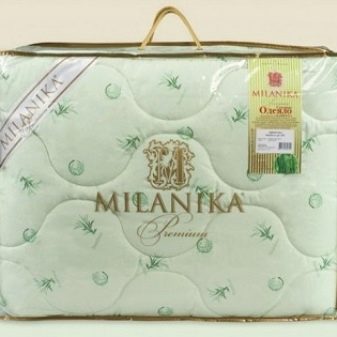
How to wash?
When caring for bamboo blankets, you must adhere to the following guidelines:
- wash products can be in an automatic washing machine, while you need to use liquid powders for delicate and delicate materials;
- bleach should not be used and aggressive compounds;
- maximum permissible temperature - 30 degrees, consider this when choosing a mode;
- dry blankets it is necessary on a horizontal surface, you can not twist the products and iron with an iron;
- to keep in shape, you need to periodically shake the blankets and ventilate every few months.


How to choose?
If you choose the right product, it will serve for more than a dozen years. Before buying, you need to carefully examine the blanket for defects, as well as touch it. A quality product is lightweight, soft and fluffy. A model for a one-and-a-half bed will weigh about one and a half kilograms. Pay attention to the material of the cover. Ideally, it should be made of bamboo linen or natural silk.
Also consider the percentage of bamboo fiber. In order for the product to boast of all the positive qualities, the volume of natural filler should not be lower than the permissible value.
Do not rush to buy a blanket at the first store you come across. Carefully evaluate the offered assortment, compare prices from different manufacturers and reviews of real buyers.
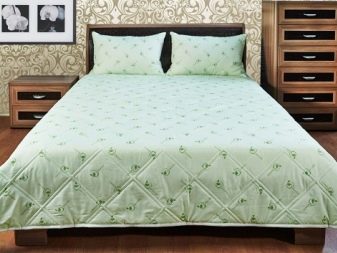
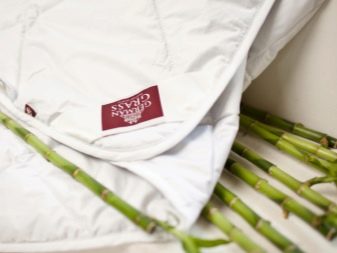
Review overview
There are many reviews on the net that talk about the pros and cons of bamboo blankets. Most of the responses are positive. Consumers noted that such products give a comfortable sleep and have all the characteristics of a modern product: practicality, reasonable price and environmental friendliness.
There are also negative reviews, some buyers noted that it is cool under such a blanket, but this may be due to the fact that a product with insufficient density was selected. Also, the performance is affected by the use of additional materials. A bamboo blanket can be in cotton or synthetic fabric.
